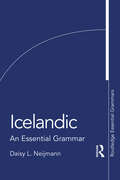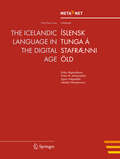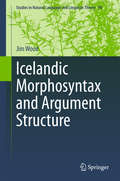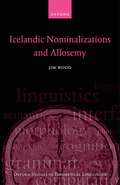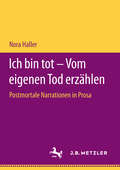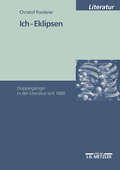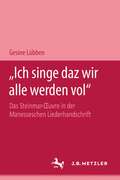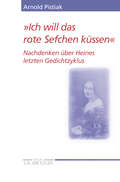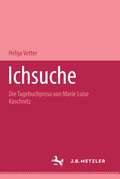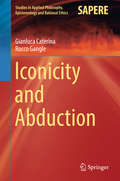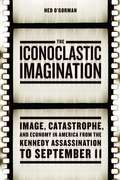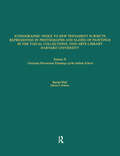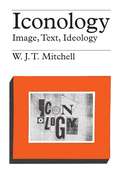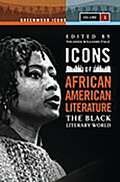- Table View
- List View
Icelandic: An Essential Grammar (Routledge Essential Grammars)
by Daisy L. NeijmannIcelandic: An Essential Grammar is a concise and convenient guide to the basic grammatical structure of Icelandic. Presenting a fresh and accessible description of the language, this engaging Grammar uses clear, jargon-free explanations and sets out the complexities of Icelandic in short, readable sections. Each grammar point is illustrated with numerous examples drawn from everyday life, clarifying the grammatical structure in use while providing insight into Icelandic culture. Icelandic: An Essential Grammar is the ideal reference grammar for all learners of Icelandic, whether class-based or independent, looking to progress beyond beginner level.
The Icelandic Language in the Digital Age (White Paper Series)
by Georg Rehm Hans UszkoreitThis white paper is part of a series that promotes knowledge about language technology and its potential. It addresses educators, journalists, politicians, language communities and others. The availability and use of language technology in Europe varies between languages. Consequently, the actions that are required to further support research and development of language technologies also differ for each language. The required actions depend on many factors, such as the complexity of a given language and the size of its community. META-NET, a Network of Excellence funded by the European Commission, has conducted an analysis of current language resources and technologies. This analysis focused on the 23 official European languages as well as other important national and regional languages in Europe. The results of this analysis suggest that there are many significant research gaps for each language.A more detailed expert analysis and assessment of the current situation will help maximise the impact of additional research and minimize any risks. META-NET consists of 54 research centres from 33 countries that are working with stakeholders from commercial businesses, government agencies, industry, research organisations, software companies, technology providers and European universities. Together, they are creating a common technology vision while developing a strategic research agenda that shows how language technology applications can address any research gaps by 2020.
Icelandic Morphosyntax and Argument Structure (Studies in Natural Language and Linguistic Theory #90)
by Jim WoodThis book provides a detailed study of Icelandic argument structure alternations within a syntactic theory of argument structure. Building on recent theorizing within the Minimalist Program and Distributed Morphology, the author proposes that much of what is traditionally attributed to syntax should be relegated to the interfaces, and adapts the late insertion theory of morphology to semantics. The resulting system forms sound-meaning pairs by generating hierarchical structures that can be translated into morphological representations, on the one hand, and semantic representations, on the other. The syntactic primitives, however, underdetermine both morphophonology and semantics. Without appealing to special stipulations, the theory derives constraints on the external argument of causative-alternation verbs, interpretive restrictions on nominative objects, and the optionally agentive interpretation of verbs denoting self-directed motion.
Icelandic Nominalizations and Allosemy (Oxford Studies in Theoretical Linguistics #84)
by Jim WoodThis book brings a basic yet detailed description of Icelandic nominalizations to bear on the general theoretical and architectural issues that nominalizations have raised since the earliest work in generative syntax. While nominalization has long been central to theories of argument structure, and Icelandic has been an important language for the study of argument structure and syntax, Icelandic has not been brought into the general body of theoretical work on nominalization. In this work, Jim Wood shows that Icelandic-specific issues in the analysis of derived nominals have broad implications that go beyond the study of that one language. In particular, Icelandic provides special evidence that Complex Event Nominals (CENs), which seem to inherit their argument structure from the underlying verbs, can be formed without nominalizing a full verb phrase. This conclusion is at odds with prominent theories of nominalization that claim that CENs have the properties that they have precisely because they involve the nominalization of full verb phrases. The book develops a theory of allosemy within the framework of Distributed Morphology, showing how one single syntactic structure can get distinct semantic interpretations corresponding to the range of readings that are available to derived nominals. The resulting proposal demonstrates how the study of Icelandic nominalizations can both further our understanding of argument structure and shed new light on the syntax-semantics interface.
Ich bin tot – Vom eigenen Tod erzählen: Postmortale Narrationen in Prosa
by Nora Haller1966 bezeichnete Roland Barthes den Satz „Ich bin tot“ als unmögliche Aussage, denn sie behaupte das radikal Widersprüchliche: Leben und Tod. Der tote Ich-Erzähler in Prosa, der seit den 1950er Jahren Konjunktur hat, macht dieses Paradoxon zum Hauptgegenstand seiner Narrationen. Und ein genauerer Blick zeigt: Postmortales Erzählen ist exemplarisches Erzählen. In keiner anderen Gattung werden die Möglichkeiten von Fiktionalität derart aufgezeigt wie hier. Und dies führt in einer Zeit, in der die Angst vor dem Tod ins Unermessliche gewachsen ist, zu einer existenziellen Frage: Wie gehen wir mit dem Tod um – und was kann Literatur dazu beitragen?
Ich-Eklipsen: Doppelgänger in der Literatur seit 1800
by Christof FordererDer Doppelgänger verstört und fasziniert: Sein Auftauchen läßt die Grenze zwischen dem Ich und den Anderen unklar werden. Das eigene Erscheinungsbild, häufig sogar die eigenen Gedanken und Gefühle begegnen auf einmal als zugehörig zur fremden Welt der übrigen Menschen und damit in einem Modus, der die eigene Identität in Frage stellt. Forderers Untersuchung beschreibt, wie sich die Moderne mit ihrer Aktualisierung des seit der Antike bekannten Doppelgängermythos ein Motiv angeeignet hat, an dem sie zwei ihrer zentralen Themen entwickeln konnte: ihre Beunruhigung über die Fragilität des Subjekts und ihre Leidenschaft für die Entgrenzung eben dieses Subjekts. Der Streifzug durch zwei Jahrhunderte Doppelgängerliteratur beginnt mit Texten der deutschen Literatur um 1800 und führt über Beispiele von Dostojewskij, Stevenson, Wilde, Meyrink u.a. zu Erzählungen von Borges, Robbe-Grillet und Hilbig.
"Ich singe daz wir alle werden vol": Das Steinmar-Oeuvre in der Manesseschen Liederhandschrift
by Gesine Lübben"Ich will das rote Sefchen küssen": Nachdenken über Heines letzten Gedichtzyklus. (Heine Studien)
by Arnold PistiakHeines letzter Gedichtzyklus »Gedichte. 1853 und 1854« ist bis heute ein Stiefkind der Forschung wie der Leser geblieben - trotz der Versicherung des Dichters: »Die Poesien sind etwas ganz Neues und geben keine alten Stimmungen in alter Manier.«
Iconicity and Abduction (Studies in Applied Philosophy, Epistemology and Rational Ethics #29)
by Gianluca Caterina Rocco GangleThis book consolidates and extends the authors’ work on the connection between iconicity and abductive inference. It emphasizes a pragmatic, experimental and fallibilist view of knowledge without sacrificing formal rigor. Within this context, the book focuses particularly on scientific knowledge and its prevalent use of mathematics. To find an answer to the question “What kind of experimental activity is the scientific employment of mathematics?” the book addresses the problems involved in formalizing abductive cognition. For this, it implements the concept and method of iconicity, modeling this theoretical framework mathematically through category theory and topoi. Peirce's concept of iconic signs is treated in depth, and it is shown how Peirce's diagrammatic logical notation of Existential Graphs makes use of iconicity and how important features of this iconicity are representable within category theory. Alain Badiou’s set-theoretical model of truth procedures and his relational sheaf-based theory of phenomenology are then integrated within the Peircean logical context. Finally, the book opens the path towards a more naturalist interpretation of the abductive models developed in Peirce and Badiou through an analysis of several recent attempts to reformulate quantum mechanics with categorical methods. Overall, the book offers a comprehensive and rigorous overview of past approaches to iconic semiotics and abduction, and it encompasses new extensions of these methods towards an innovative naturalist interpretation of abductive reasoning.
The Iconoclastic Imagination: Image, Catastrophe, and Economy in America from the Kennedy Assassination to September 11
by Ned O'GormanBloody, fiery spectacles—the Challenger disaster, 9/11, JFK’s assassination—have given us moments of catastrophe that make it easy to answer the “where were you when” question and shape our ways of seeing what came before and after. Why are these spectacles so packed with meaning? In The Iconoclastic Imagination, Ned O’Gorman approaches each of these moments as an image of icon-destruction that give us distinct ways to imagine social existence in American life. He argues that the Cold War gave rise to crises in political, aesthetic, and political-aesthetic representations. Locating all of these crises within a “neoliberal imaginary,” O’Gorman explains that since the Kennedy assassination, the most powerful way to see “America” has been in the destruction of representative American symbols or icons. This, in turn, has profound implications for a neoliberal economy, social philosophy, and public policy. Richly interwoven with philosophical, theological, and rhetorical traditions, the book offers a new foundation for a complex and innovative approach to studying Cold War America, political theory, and visual culture.
The Iconoclastic Imagination: Image, Catastrophe, and Economy in America from the Kennedy Assassination to September 11
by Ned O'GormanBloody, fiery spectacles—the Challenger disaster, 9/11, JFK’s assassination—have given us moments of catastrophe that make it easy to answer the “where were you when” question and shape our ways of seeing what came before and after. Why are these spectacles so packed with meaning? In The Iconoclastic Imagination, Ned O’Gorman approaches each of these moments as an image of icon-destruction that give us distinct ways to imagine social existence in American life. He argues that the Cold War gave rise to crises in political, aesthetic, and political-aesthetic representations. Locating all of these crises within a “neoliberal imaginary,” O’Gorman explains that since the Kennedy assassination, the most powerful way to see “America” has been in the destruction of representative American symbols or icons. This, in turn, has profound implications for a neoliberal economy, social philosophy, and public policy. Richly interwoven with philosophical, theological, and rhetorical traditions, the book offers a new foundation for a complex and innovative approach to studying Cold War America, political theory, and visual culture.
The Iconoclastic Imagination: Image, Catastrophe, and Economy in America from the Kennedy Assassination to September 11
by Ned O'GormanBloody, fiery spectacles—the Challenger disaster, 9/11, JFK’s assassination—have given us moments of catastrophe that make it easy to answer the “where were you when” question and shape our ways of seeing what came before and after. Why are these spectacles so packed with meaning? In The Iconoclastic Imagination, Ned O’Gorman approaches each of these moments as an image of icon-destruction that give us distinct ways to imagine social existence in American life. He argues that the Cold War gave rise to crises in political, aesthetic, and political-aesthetic representations. Locating all of these crises within a “neoliberal imaginary,” O’Gorman explains that since the Kennedy assassination, the most powerful way to see “America” has been in the destruction of representative American symbols or icons. This, in turn, has profound implications for a neoliberal economy, social philosophy, and public policy. Richly interwoven with philosophical, theological, and rhetorical traditions, the book offers a new foundation for a complex and innovative approach to studying Cold War America, political theory, and visual culture.
The Iconoclastic Imagination: Image, Catastrophe, and Economy in America from the Kennedy Assassination to September 11
by Ned O'GormanBloody, fiery spectacles—the Challenger disaster, 9/11, JFK’s assassination—have given us moments of catastrophe that make it easy to answer the “where were you when” question and shape our ways of seeing what came before and after. Why are these spectacles so packed with meaning? In The Iconoclastic Imagination, Ned O’Gorman approaches each of these moments as an image of icon-destruction that give us distinct ways to imagine social existence in American life. He argues that the Cold War gave rise to crises in political, aesthetic, and political-aesthetic representations. Locating all of these crises within a “neoliberal imaginary,” O’Gorman explains that since the Kennedy assassination, the most powerful way to see “America” has been in the destruction of representative American symbols or icons. This, in turn, has profound implications for a neoliberal economy, social philosophy, and public policy. Richly interwoven with philosophical, theological, and rhetorical traditions, the book offers a new foundation for a complex and innovative approach to studying Cold War America, political theory, and visual culture.
The Iconoclastic Imagination: Image, Catastrophe, and Economy in America from the Kennedy Assassination to September 11
by Ned O'GormanBloody, fiery spectacles—the Challenger disaster, 9/11, JFK’s assassination—have given us moments of catastrophe that make it easy to answer the “where were you when” question and shape our ways of seeing what came before and after. Why are these spectacles so packed with meaning? In The Iconoclastic Imagination, Ned O’Gorman approaches each of these moments as an image of icon-destruction that give us distinct ways to imagine social existence in American life. He argues that the Cold War gave rise to crises in political, aesthetic, and political-aesthetic representations. Locating all of these crises within a “neoliberal imaginary,” O’Gorman explains that since the Kennedy assassination, the most powerful way to see “America” has been in the destruction of representative American symbols or icons. This, in turn, has profound implications for a neoliberal economy, social philosophy, and public policy. Richly interwoven with philosophical, theological, and rhetorical traditions, the book offers a new foundation for a complex and innovative approach to studying Cold War America, political theory, and visual culture.
The Iconoclastic Imagination: Image, Catastrophe, and Economy in America from the Kennedy Assassination to September 11
by Ned O'GormanBloody, fiery spectacles—the Challenger disaster, 9/11, JFK’s assassination—have given us moments of catastrophe that make it easy to answer the “where were you when” question and shape our ways of seeing what came before and after. Why are these spectacles so packed with meaning? In The Iconoclastic Imagination, Ned O’Gorman approaches each of these moments as an image of icon-destruction that give us distinct ways to imagine social existence in American life. He argues that the Cold War gave rise to crises in political, aesthetic, and political-aesthetic representations. Locating all of these crises within a “neoliberal imaginary,” O’Gorman explains that since the Kennedy assassination, the most powerful way to see “America” has been in the destruction of representative American symbols or icons. This, in turn, has profound implications for a neoliberal economy, social philosophy, and public policy. Richly interwoven with philosophical, theological, and rhetorical traditions, the book offers a new foundation for a complex and innovative approach to studying Cold War America, political theory, and visual culture.
Iconographic Index to New Testament Subjects Represented in Photographs and Slides of Paintings in the Visual Collections, Fine Arts Library, Harvard University: Christian Devotional Paintings of the Italian School
by Rachel Hall Helene E. RobertsThis vast reference resource will appeal to anyone who wishes to find depictions of New Testament narratives from scholars, to students, to picture researchers. The first part of the book consists of a list of proper names, terms, and concepts relating to New Testament narratives represented. Under each name, term or concept, the ICONCLASS alphanumeric codes are entered, along with a brief description of the New Testament scenes in which the characters or actions occur. The second part of this text is organized according to the ICONCLASS alphanumeric codes, their order reflecting the Biblical sequence of narrative.
Iconographic Index to New Testament Subjects Represented in Photographs and Slides of Paintings in the Visual Collections, Fine Arts Library, Harvard University: Christian Devotional Paintings of the Italian School
by Rachel Hall with Helene E. RobertsThis vast reference resource will appeal to anyone who wishes to find depictions of New Testament narratives from scholars, to students, to picture researchers. The first part of the book consists of a list of proper names, terms, and concepts relating to New Testament narratives represented. Under each name, term or concept, the ICONCLASS alphanumeric codes are entered, along with a brief description of the New Testament scenes in which the characters or actions occur. The second part of this text is organized according to the ICONCLASS alphanumeric codes, their order reflecting the Biblical sequence of narrative.
Iconographic Research Poetry (SpringerBriefs in Arts-Based Educational Research)
by Marcy MeyerThis open access book introduces readers to the craft of writing iconographic research poetry in a way that is scholarly, yet playful. By tracing the historical foundations of concrete and iconographic poetry, as well as the development of research poetry and poetic inquiry, the book examines the intellectual roots that inform this unique methodological approach. The book offers a detailed description of the methods that can be used to design iconographic research poetry. It includes step-by-step description of strategies that researchers can use to create iconographic research poetry from qualitative data. By explicating the processes by which data can be represented in the form of iconographic research poetry and offering exemplars, readers will find specific hands-on strategies for creating their own iconographic research poems. The book contains writing exercises designed to help aspiring iconographic research poets exercise their poetic imagination. It also provides qualitative research instructors with suggestions for integrating iconographic research poetry into the classroom.
Iconology: Image, Text, Ideology
by W. J. Mitchell"[Mitchell] undertakes to explore the nature of images by comparing them with words, or, more precisely, by looking at them from the viewpoint of verbal language. . . . The most lucid exposition of the subject I have ever read."—Rudolf Arnheim, Times Literary Supplement
Iconology: Image, Text, Ideology
by W. J. Mitchell"[Mitchell] undertakes to explore the nature of images by comparing them with words, or, more precisely, by looking at them from the viewpoint of verbal language. . . . The most lucid exposition of the subject I have ever read."—Rudolf Arnheim, Times Literary Supplement
Iconology: Image, Text, Ideology
by W. J. Mitchell"[Mitchell] undertakes to explore the nature of images by comparing them with words, or, more precisely, by looking at them from the viewpoint of verbal language. . . . The most lucid exposition of the subject I have ever read."—Rudolf Arnheim, Times Literary Supplement
Iconology: Image, Text, Ideology
by W. J. Mitchell"[Mitchell] undertakes to explore the nature of images by comparing them with words, or, more precisely, by looking at them from the viewpoint of verbal language. . . . The most lucid exposition of the subject I have ever read."—Rudolf Arnheim, Times Literary Supplement
Icons of African American Literature: The Black Literary World (Greenwood Icons)
by Yolanda Williams PageThe 24 entries in this book provide extensive coverage of some of the most notable figures in African American literature, such as Alice Walker, Richard Wright, and Zora Neale Hurston.Icons of African American Literature: The Black Literary World examines 24 of the most popular and culturally significant topics within African American literature's long and immensely fascinating history. Each piece provide substantial, in-depth information—much more than a typical encyclopedia entry—while remaining accessible and appealing to general and younger readers.Arranged alphabetically, the entries cover such writers as Maya Angelou, James Baldwin, and August Wilson; major works, such as Invisible Man, Native Son, and Their Eyes Were Watching God; and a range of cultural topics, including the black arts movement, the Harlem Renaissance, and the jazz aesthetic. Written by expert contributors, the essays discuss the enduring significance of these topics in American history and popular culture. Each entry also provides sidebars that highlight interesting information and suggestions for further reading.
Icons of Horror and the Supernatural: An Encyclopedia of Our Worst Nightmares [2 volumes] (Greenwood Icons)
by S. T. JoshiHorror and the supernatural have fascinated people for centuries, and many of the most central figures appear over and over again. These figures have gained iconic status and continue to hold sway over popular culture and the modern imagination. This book offers extended entries on 24 of the most enduring and significant figures of horror and the supernatural, including The Sea Creature, The Witch, The Alien, The Vampire, The Werewolf, The Sorcerer, The Ghost, The Siren, The Mummy, The Devil, and The Zombie. Each entry is written by a leading authority on the subject and discusses the topic's essential features and lasting influence, from the classical epics of Homer to the novels of Stephen King. Entries cite sources for further reading, and the Encyclopedia closes with a selected, general bibliography. Entries include illustrations, sidebars of interesting information, and excerpts from key texts.Horror and the supernatural have fascinated people for centuries, with many of the most central figures appearing over and over again across time and cultures. These figures have starred in the world's most widely read literary works, most popular films, and most captivating television series. Because of their popularity and influence, they have attained iconic status and a special place in the popular imagination. This book overviews 24 of the most significant icons of horror and the supernatural.
